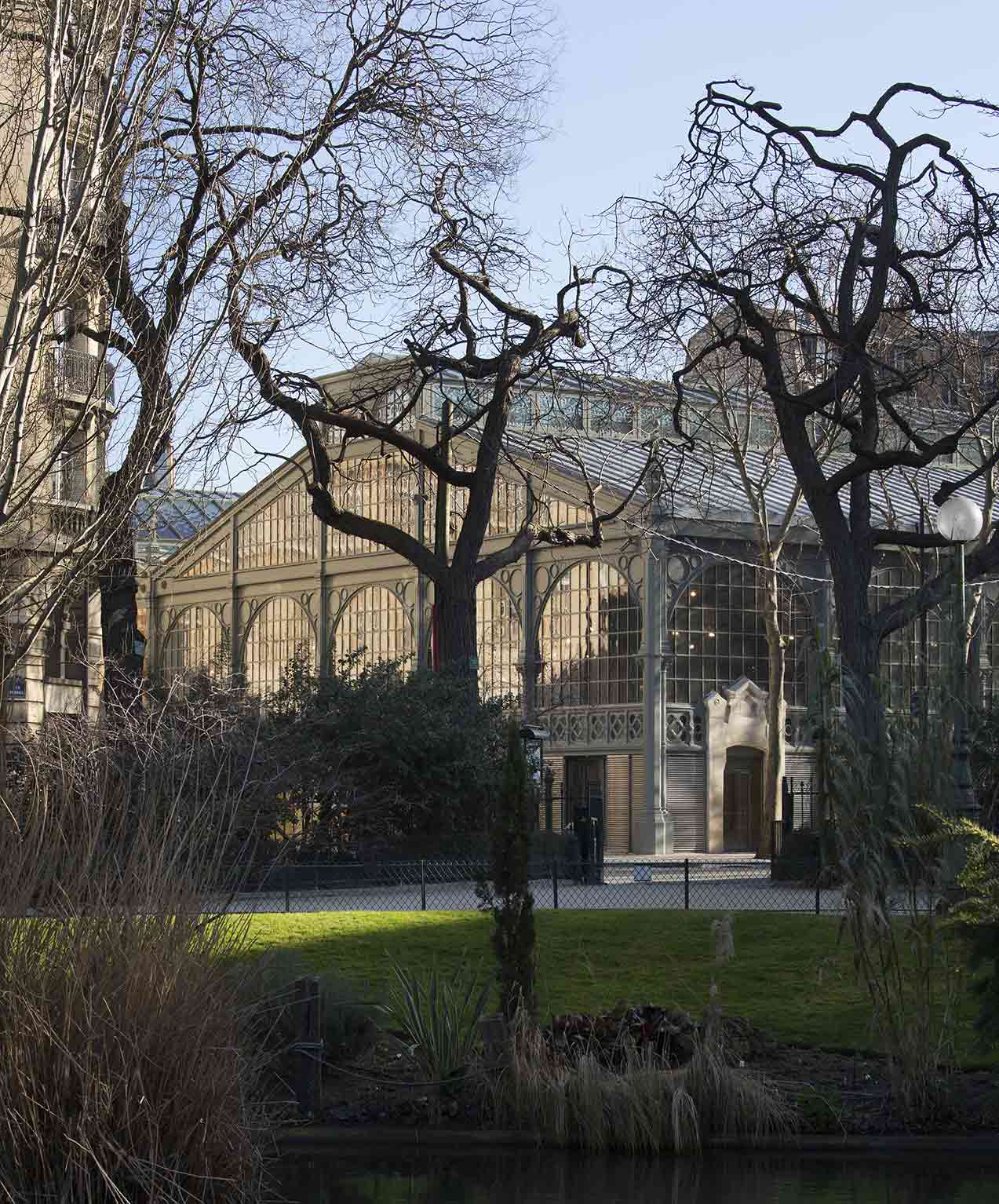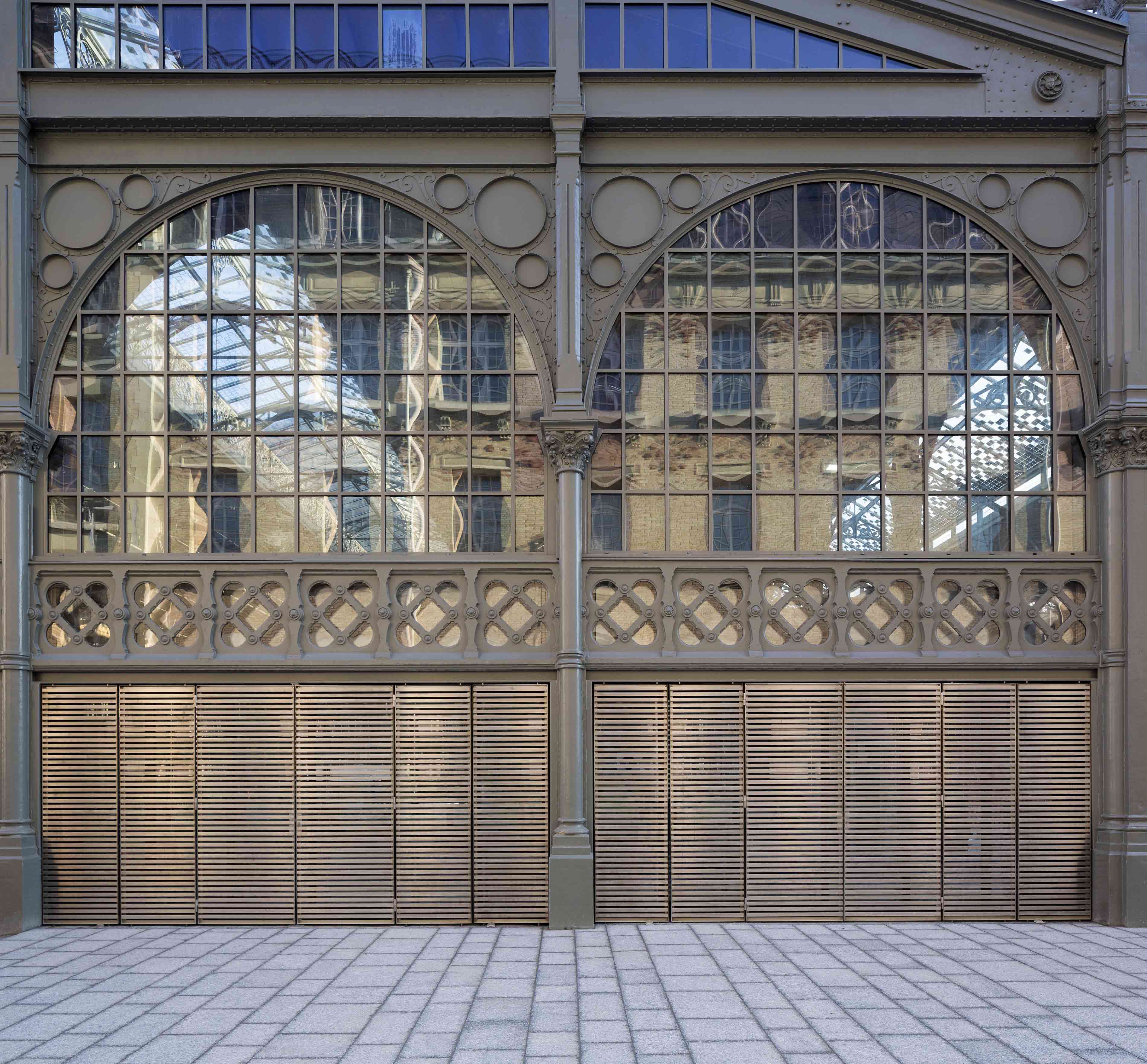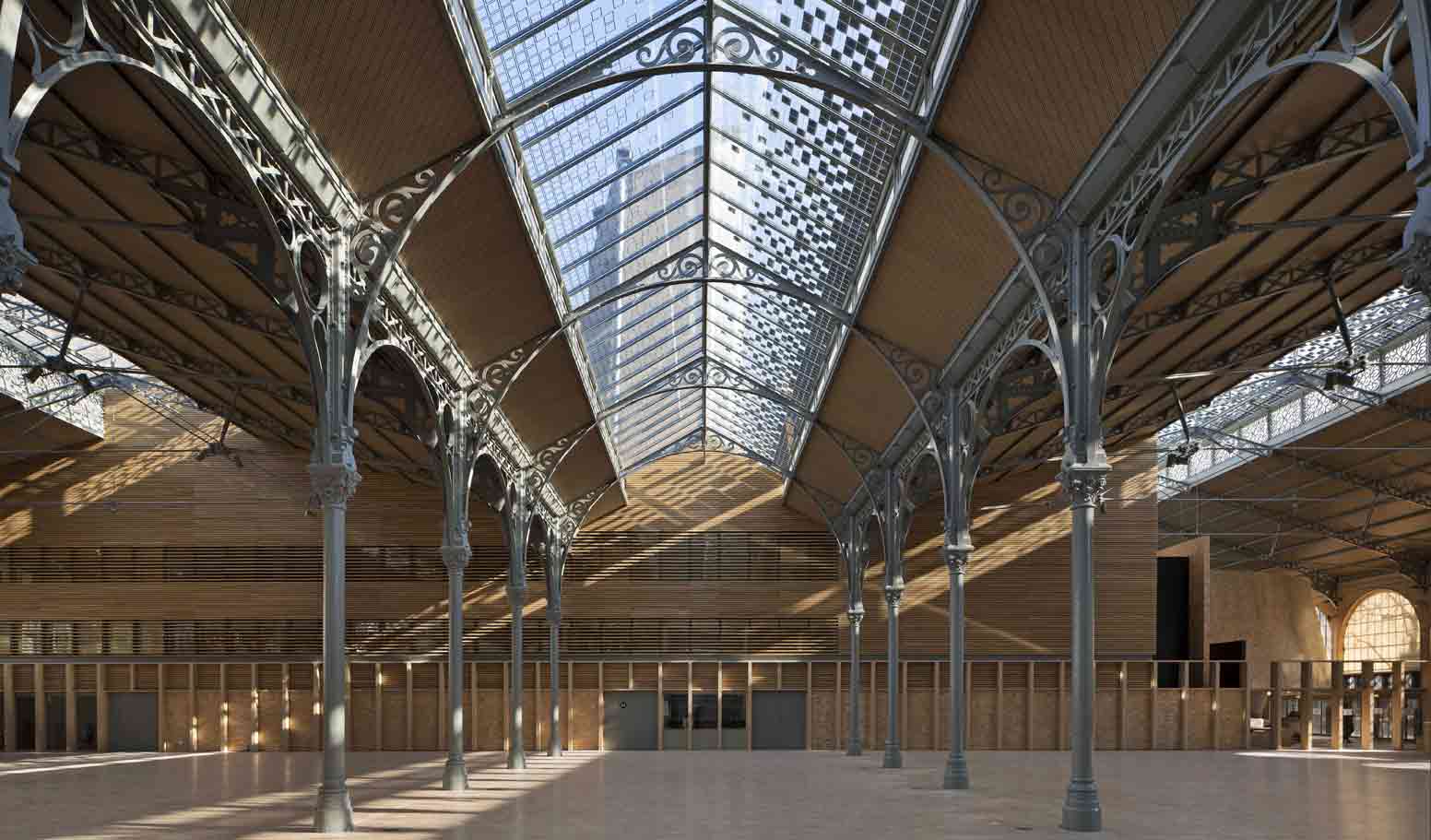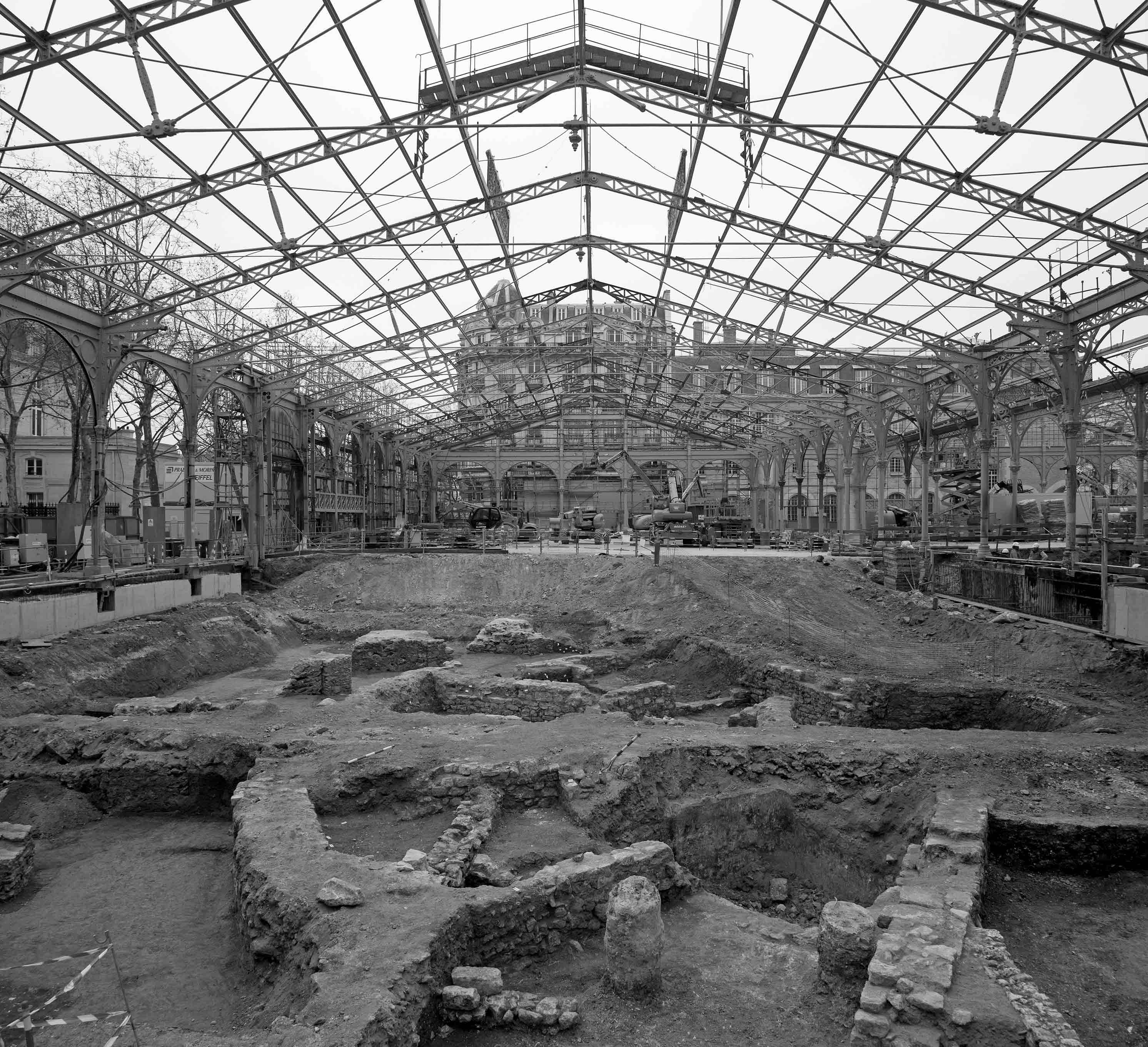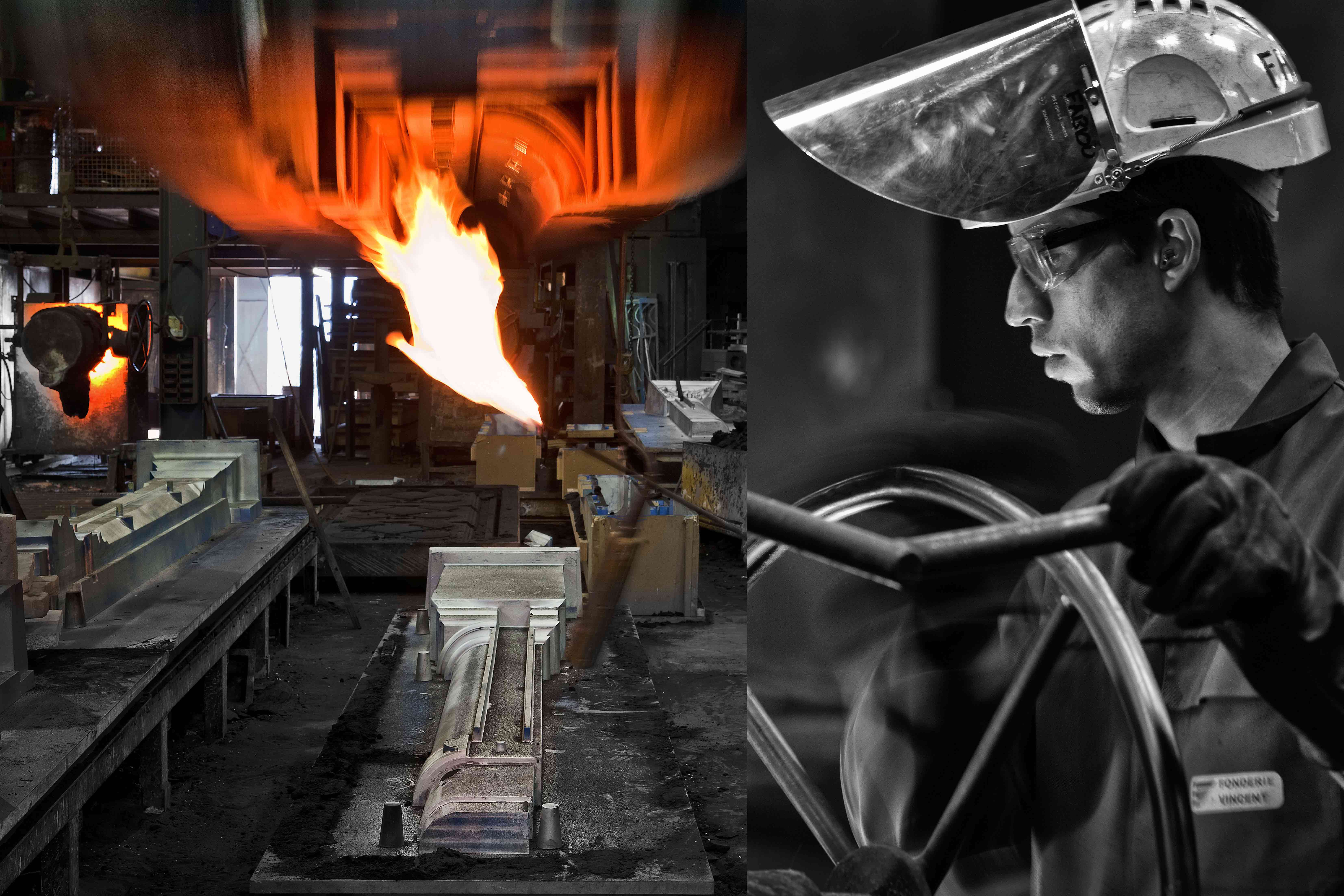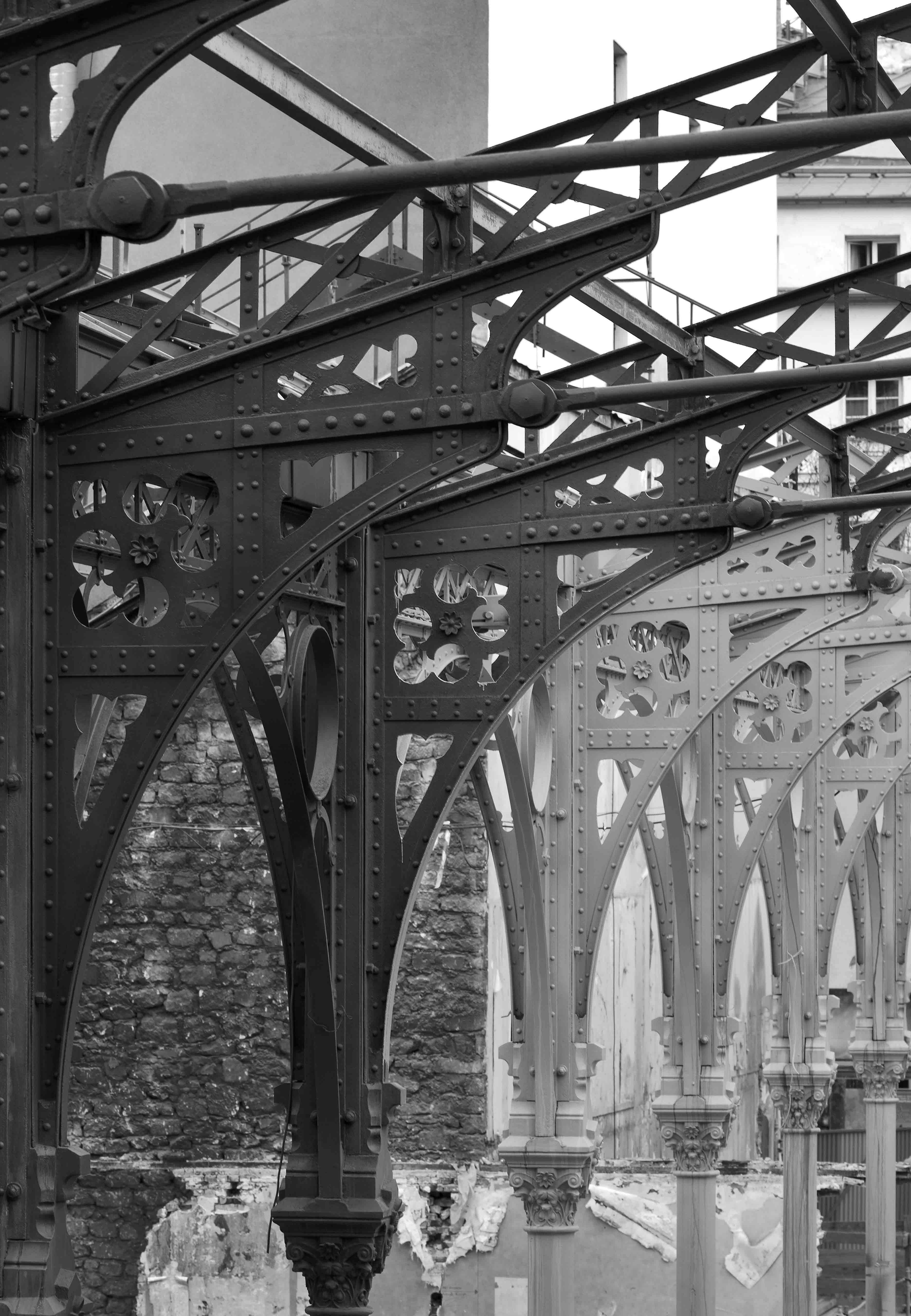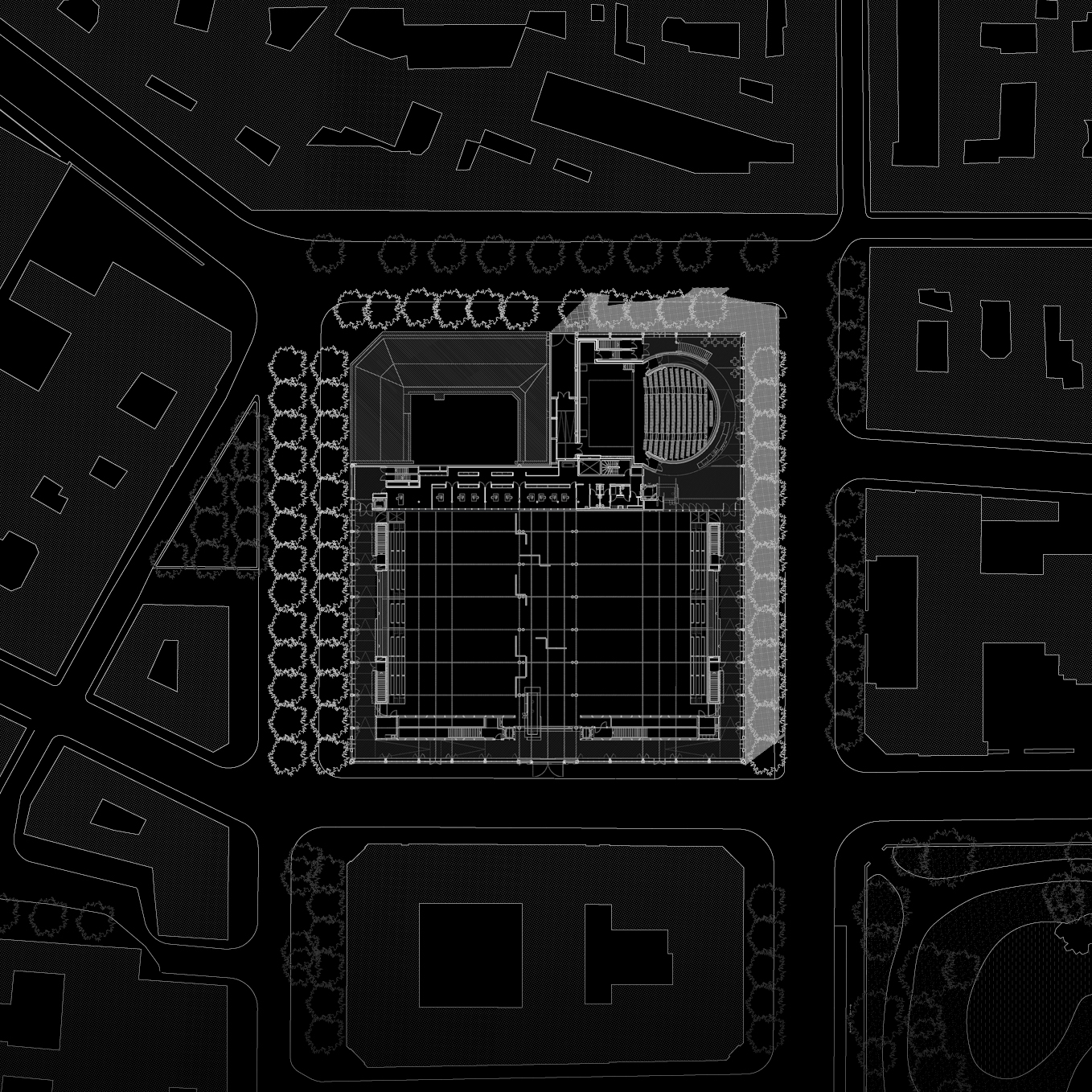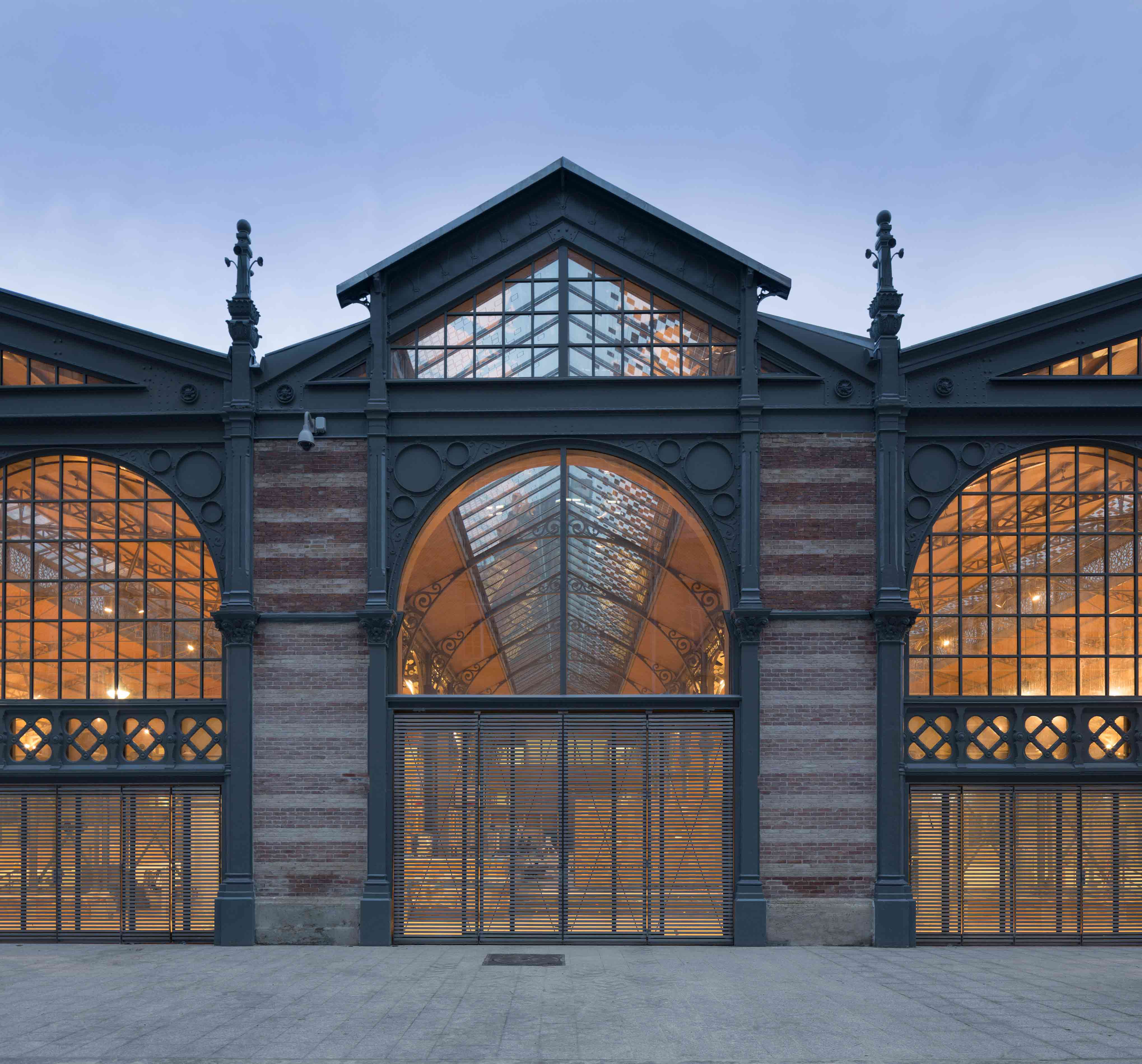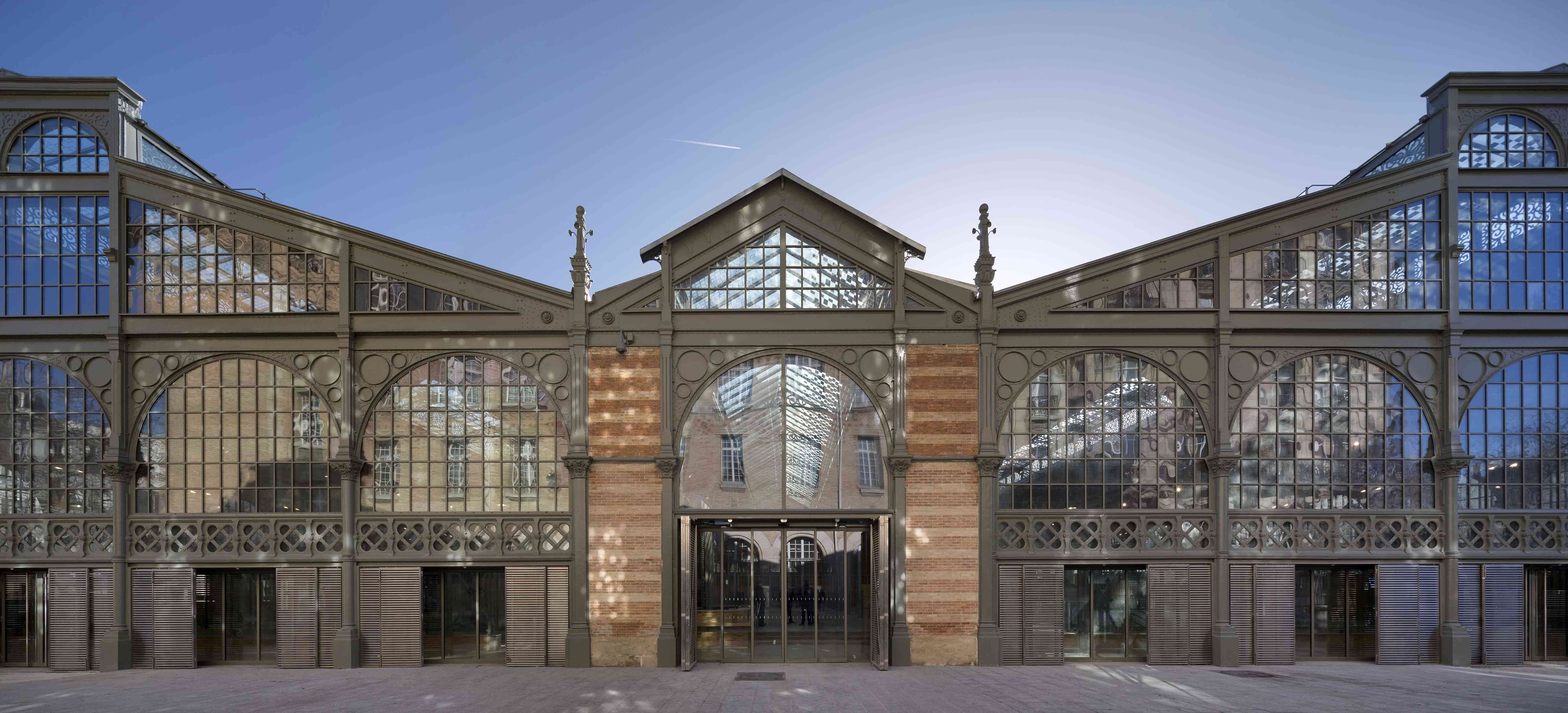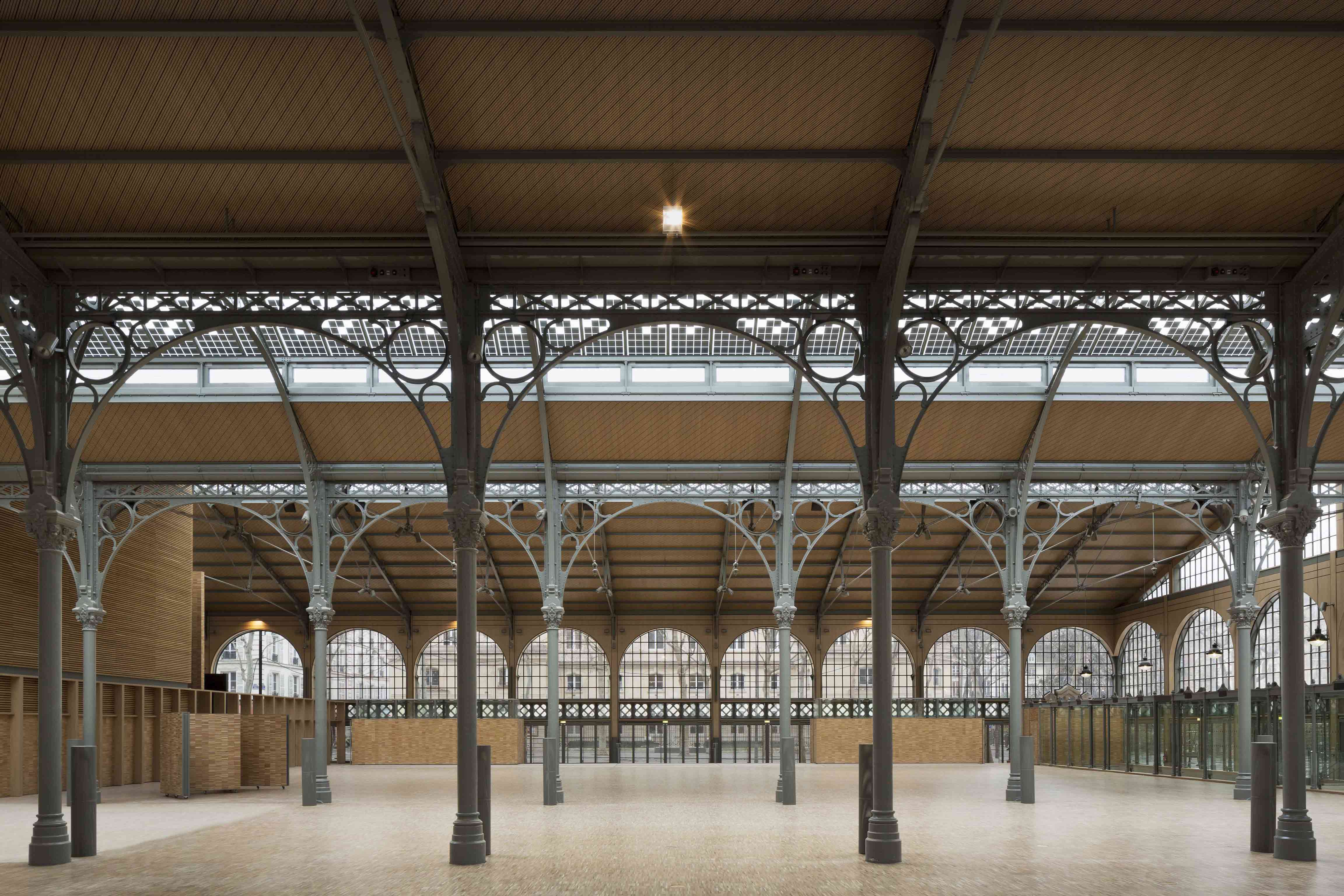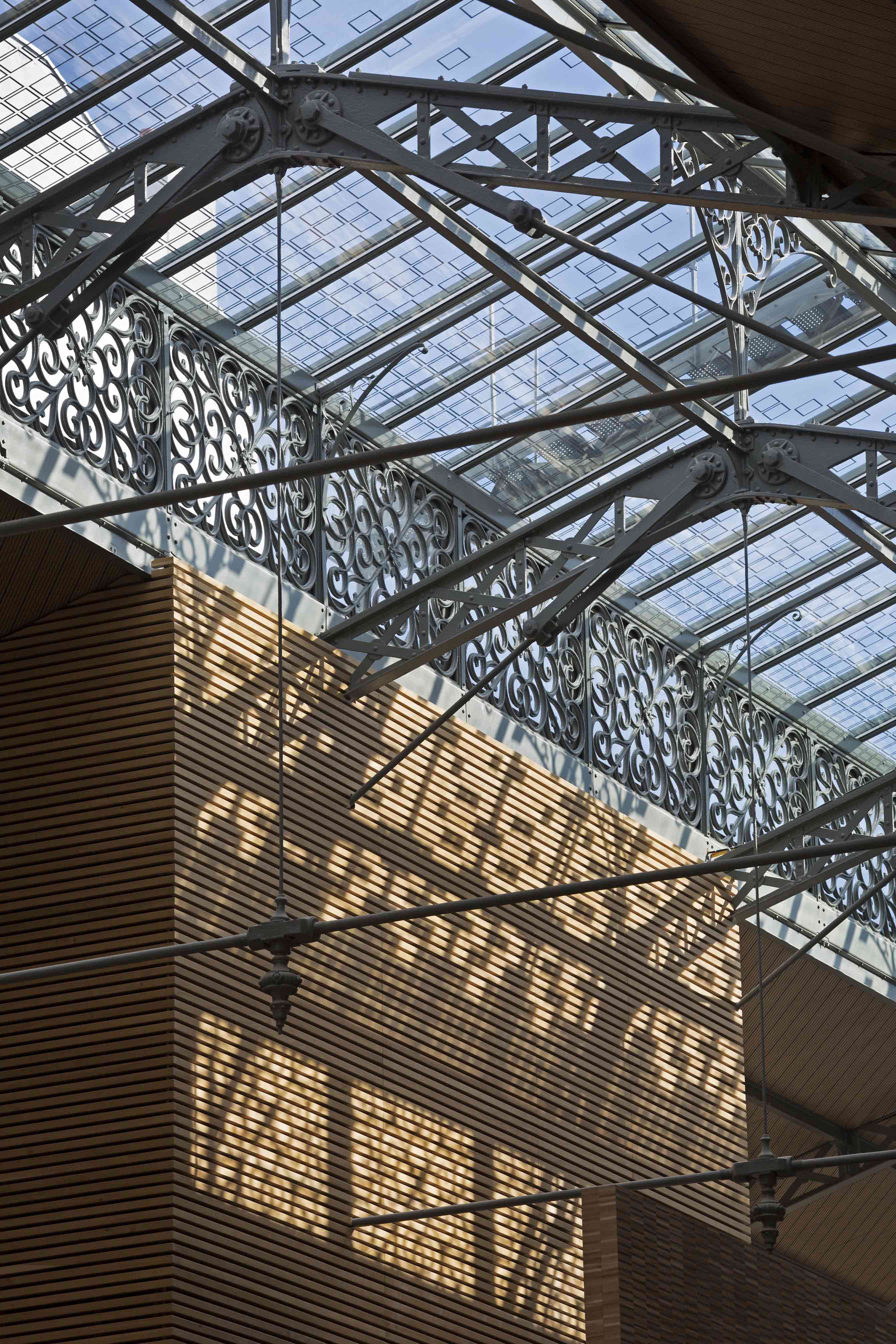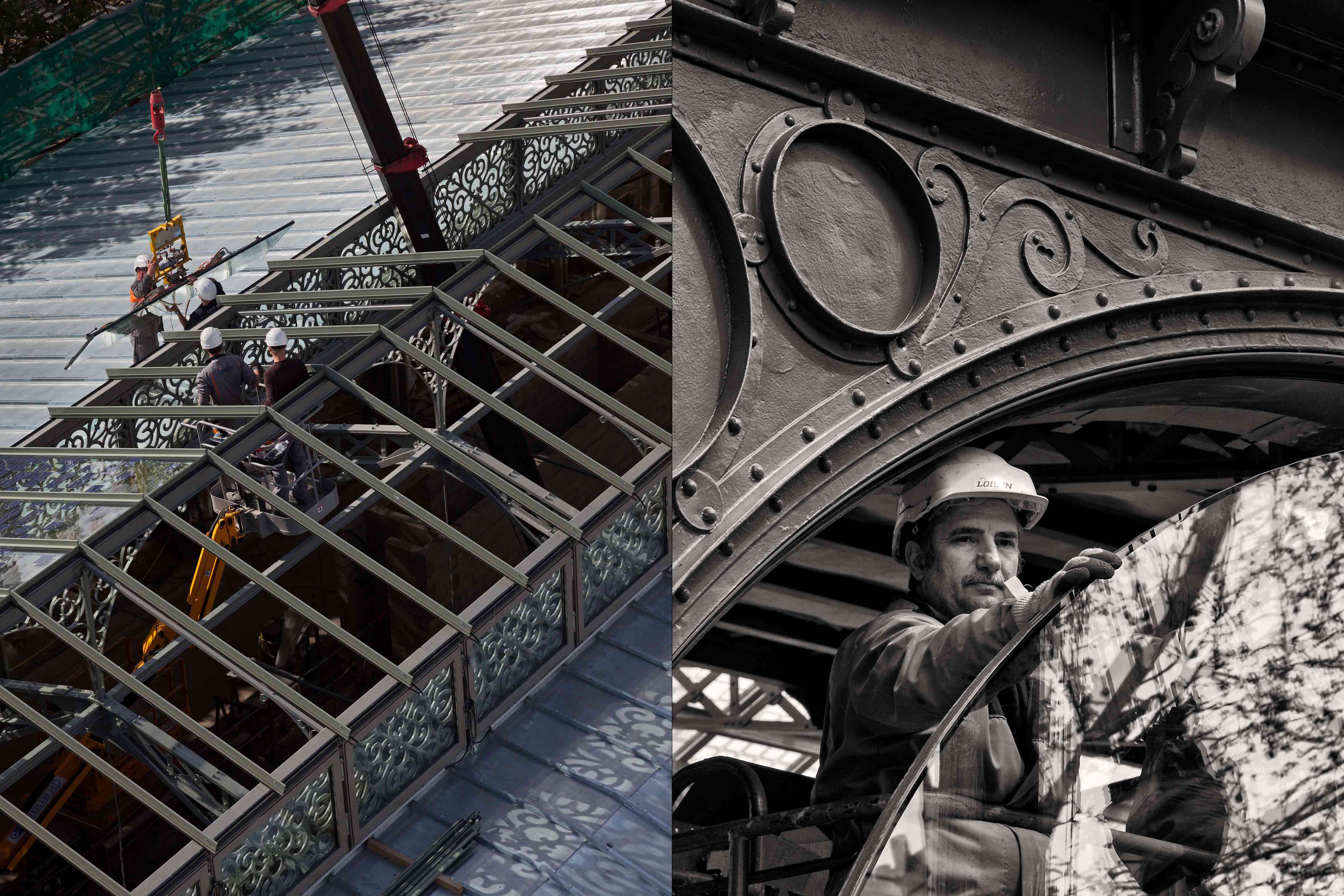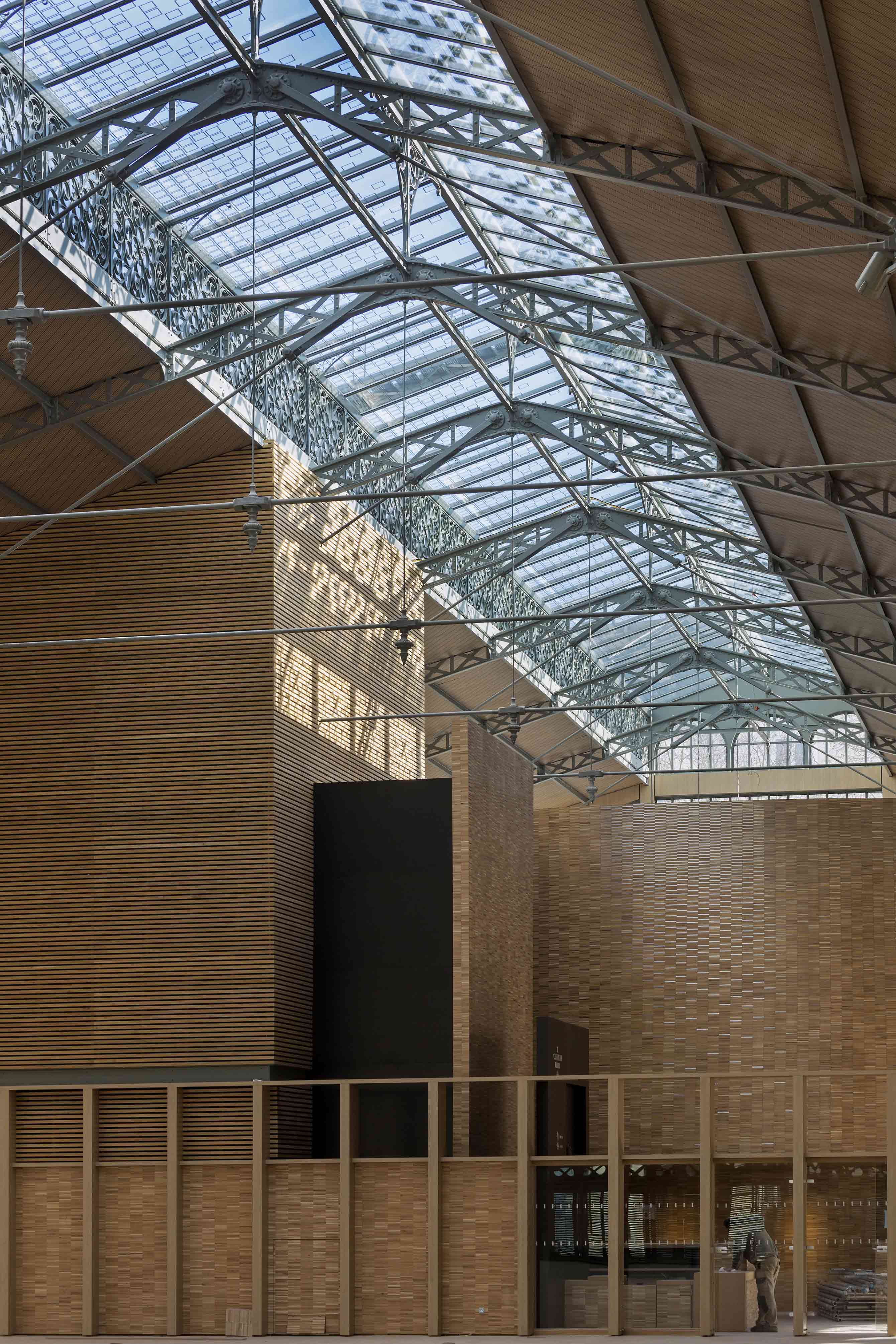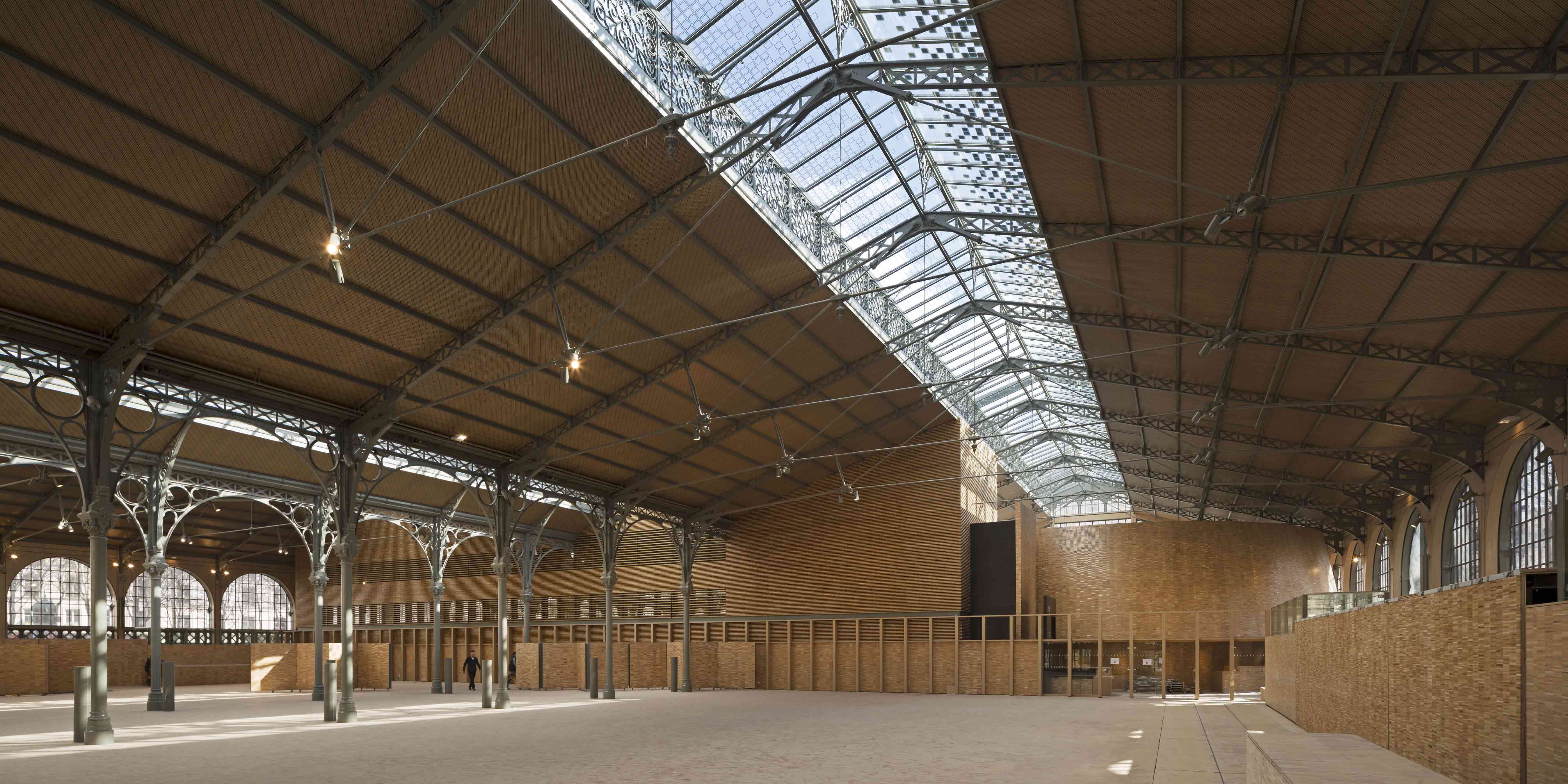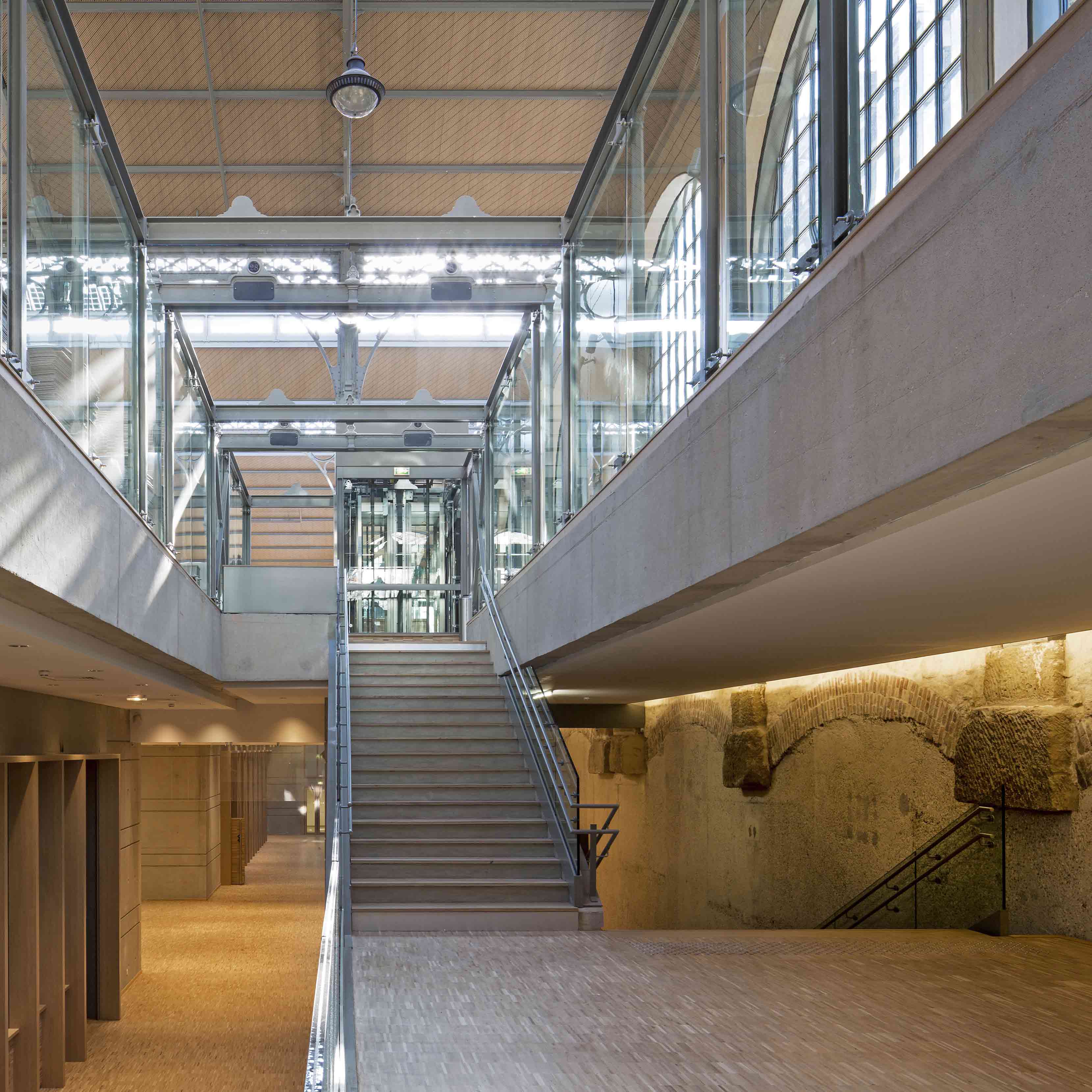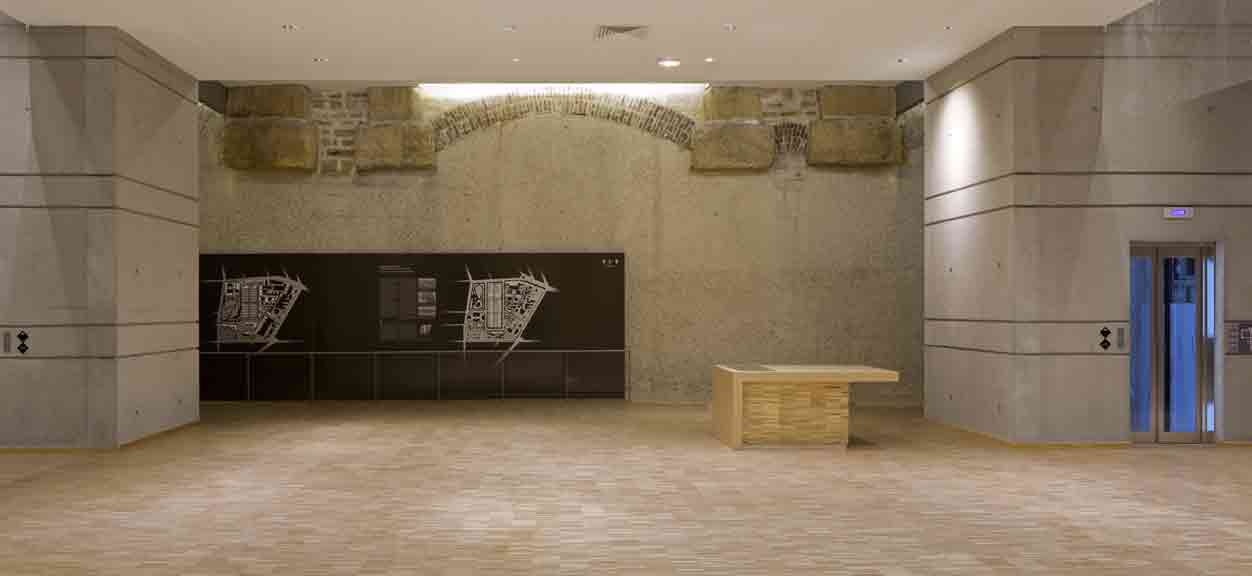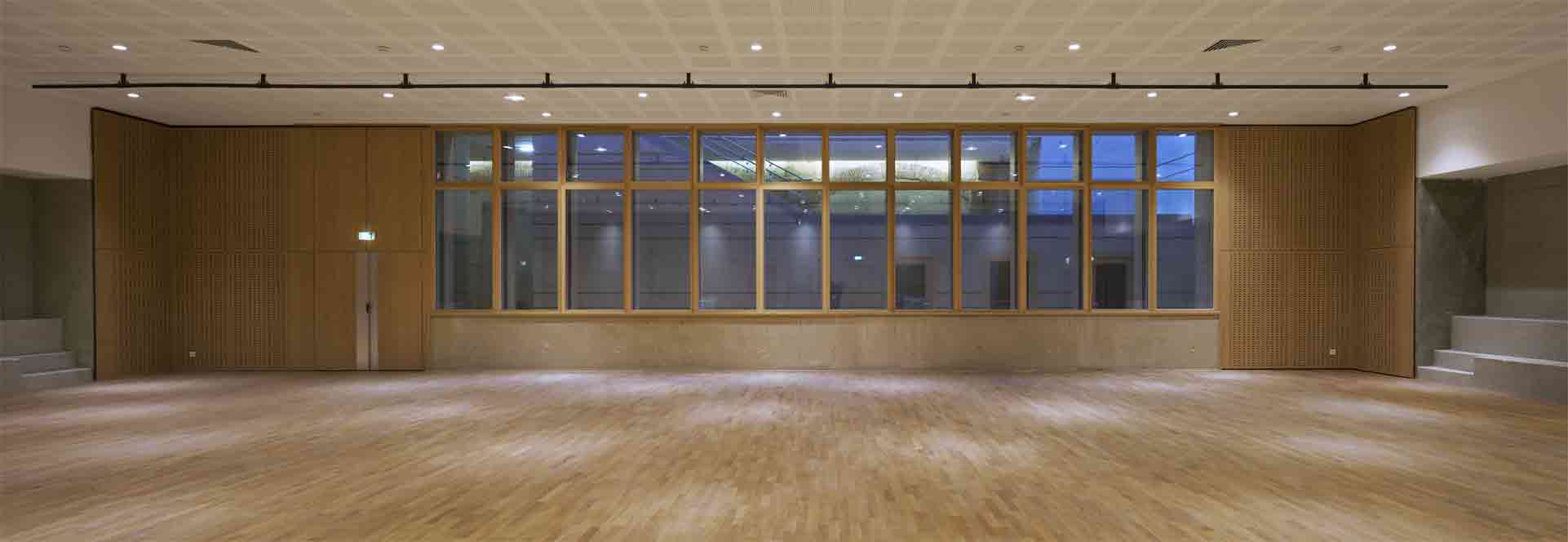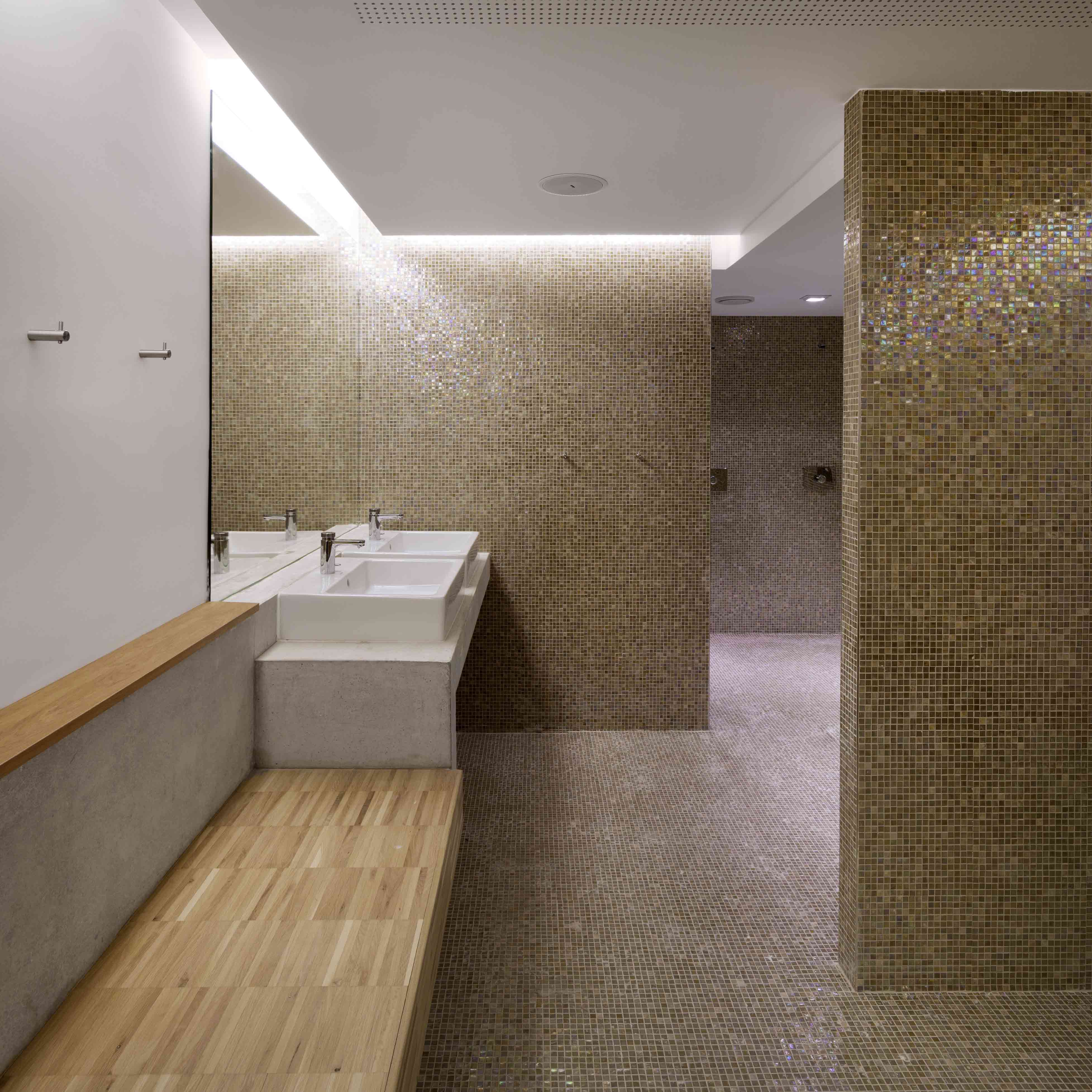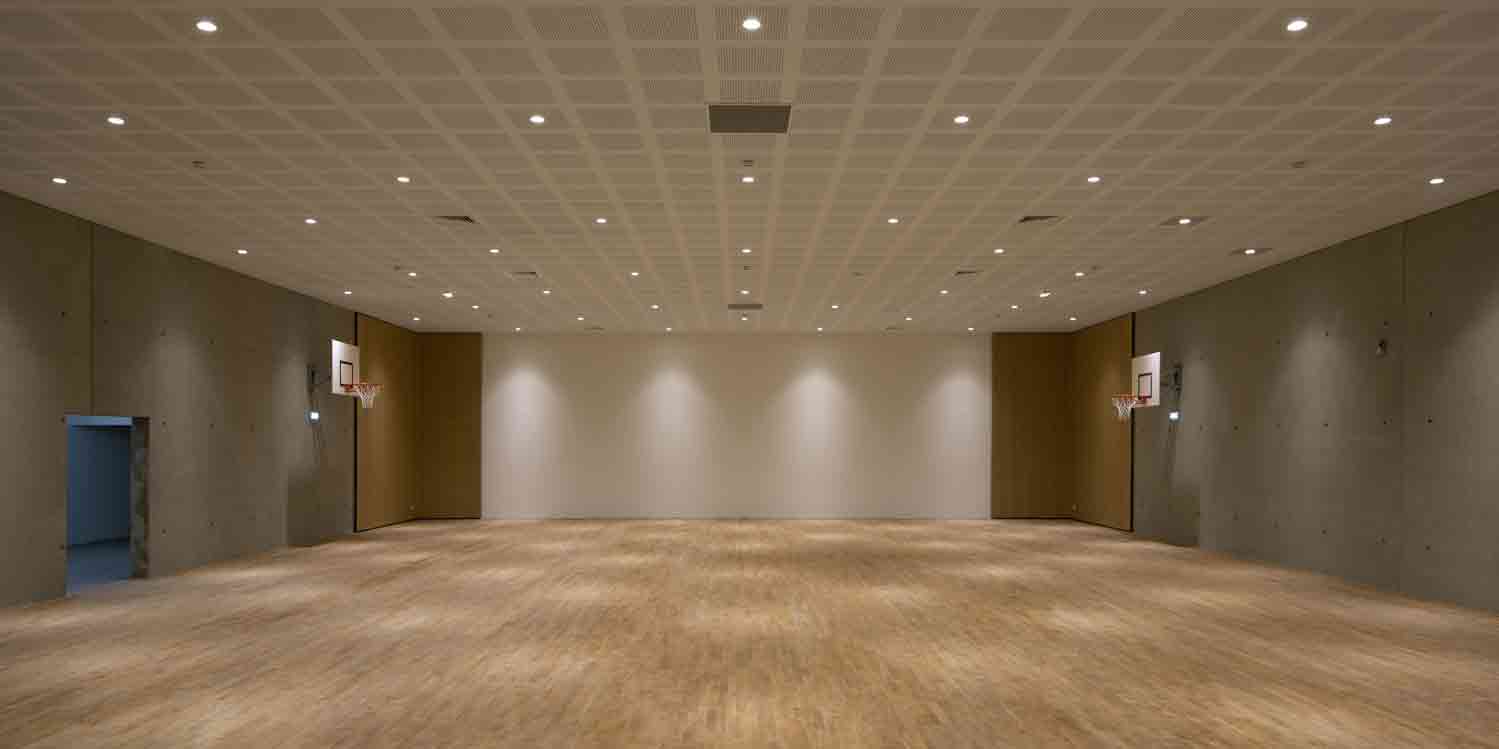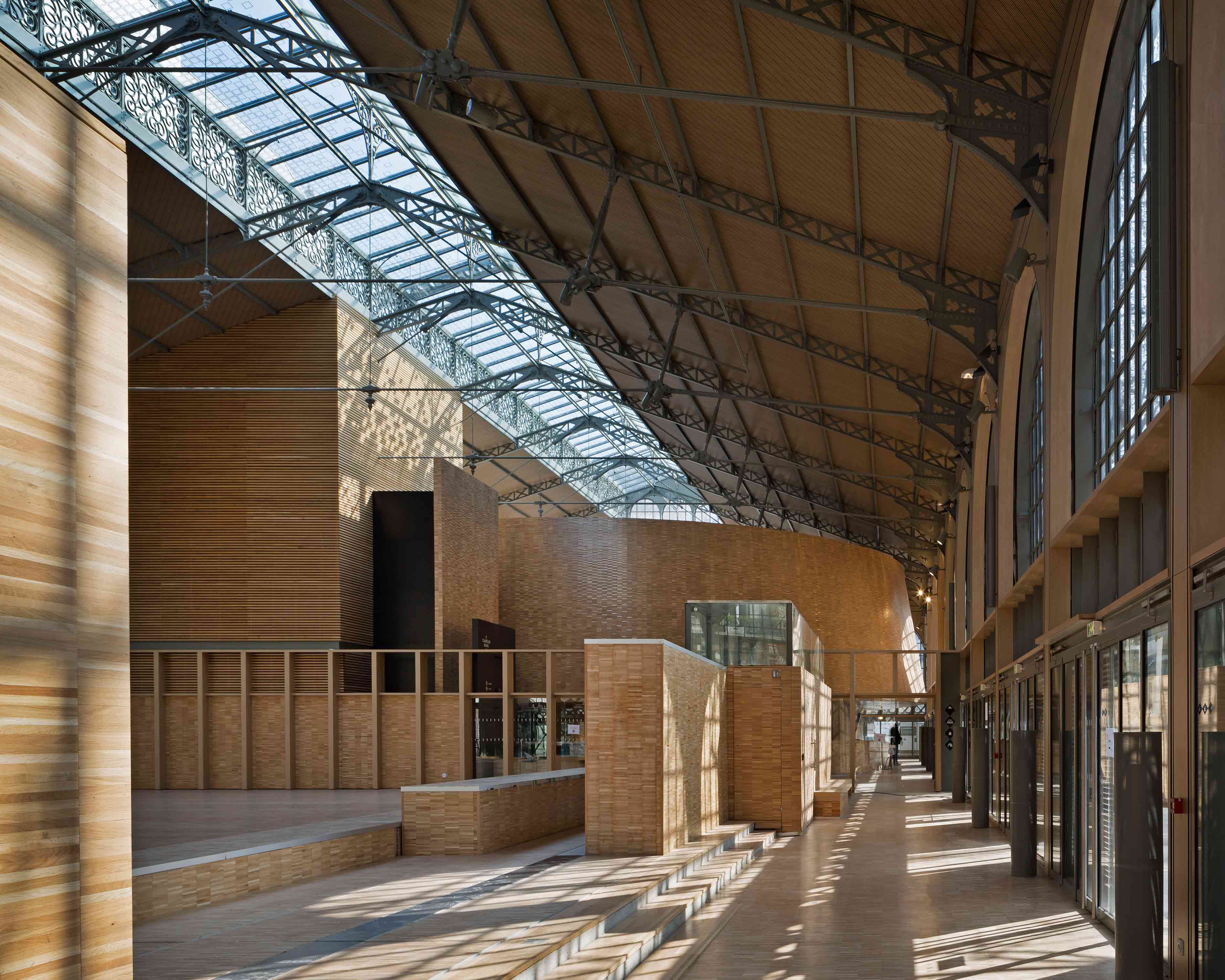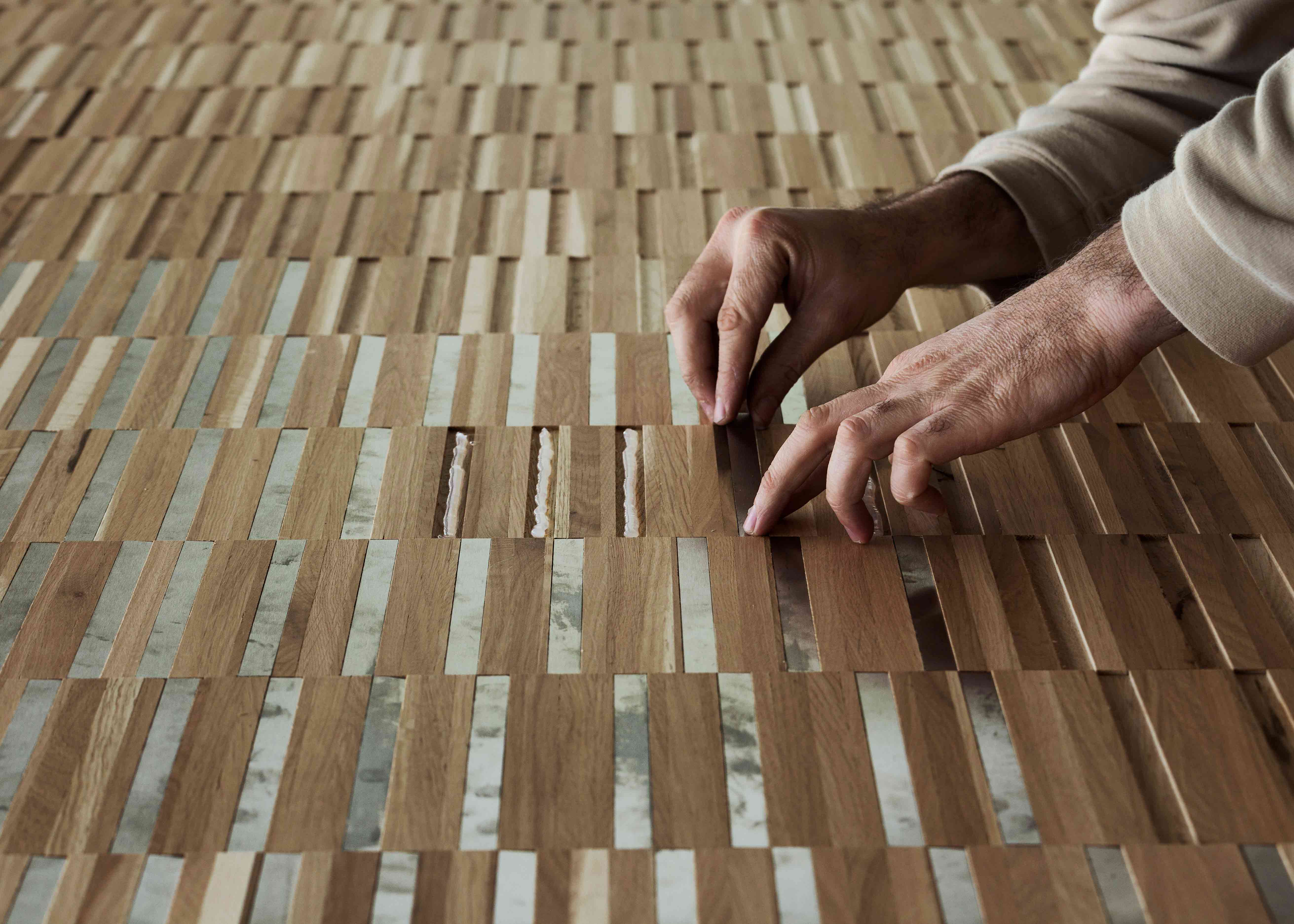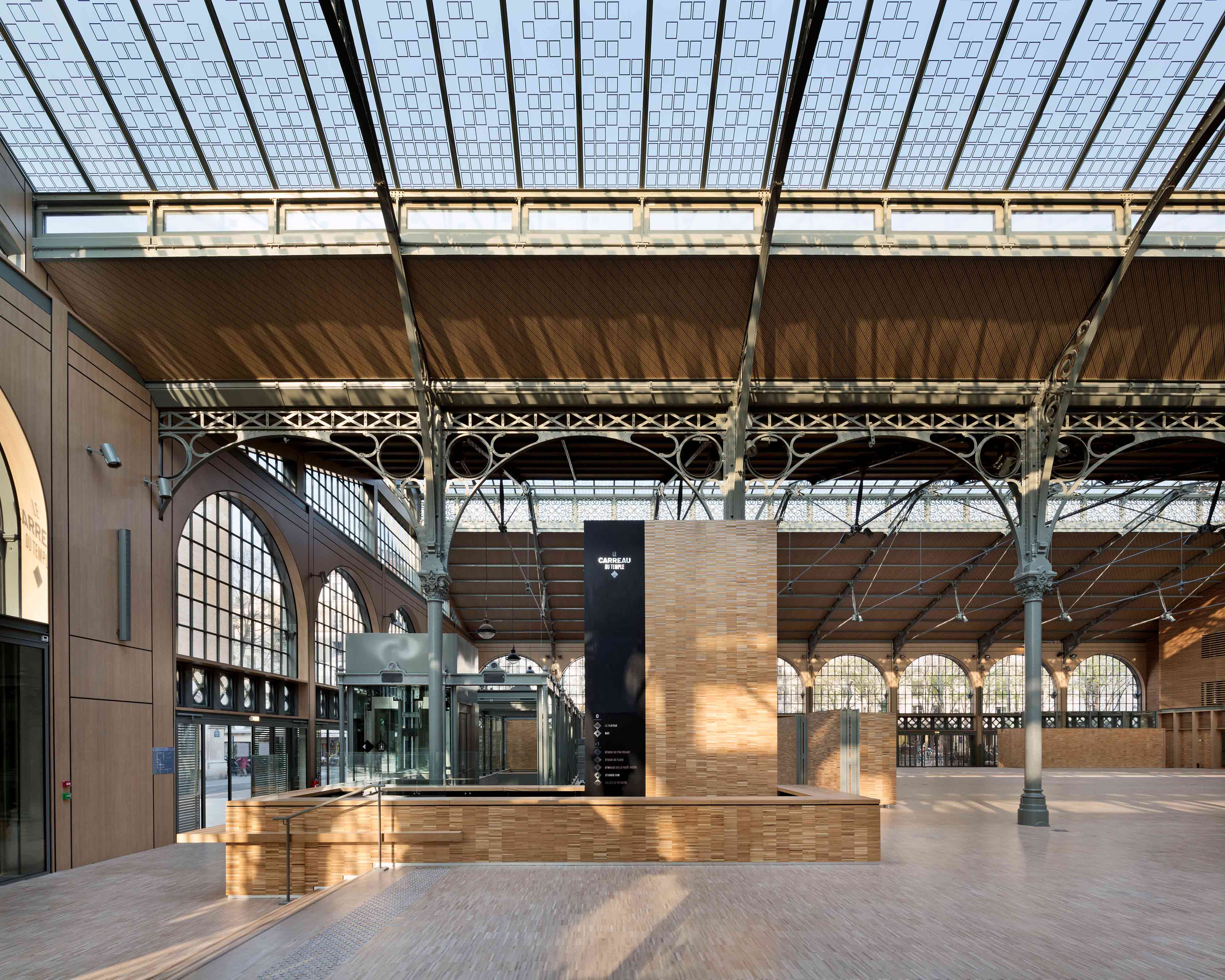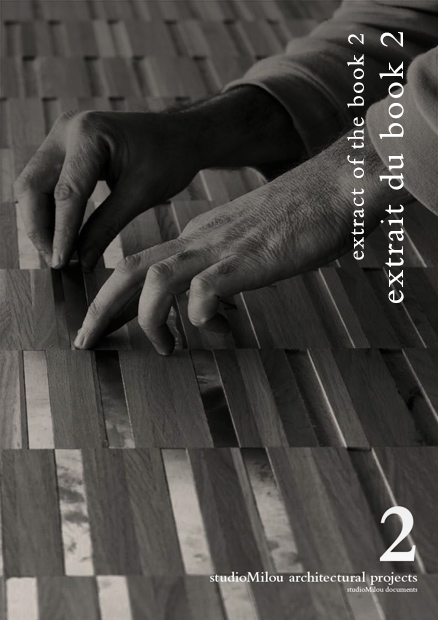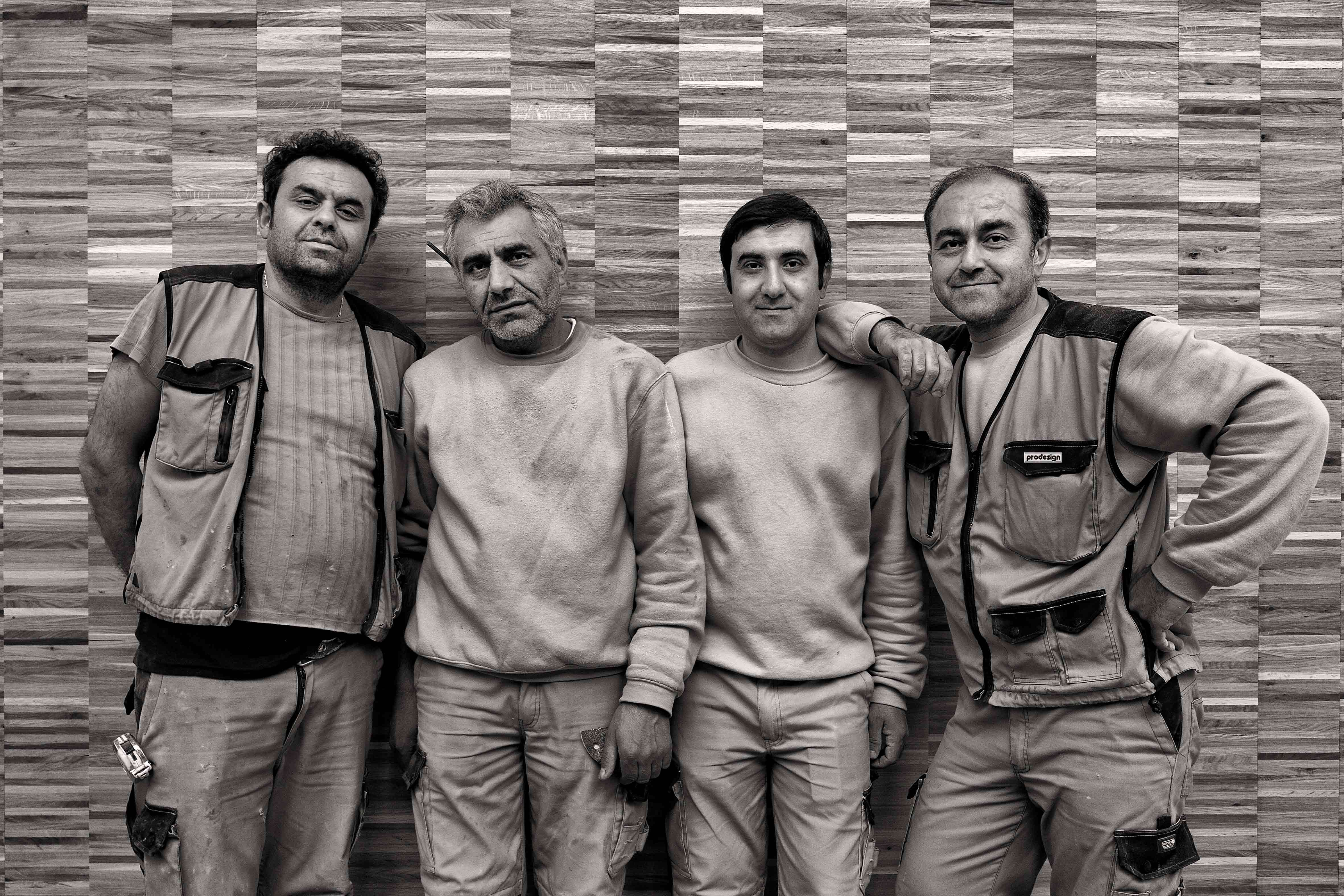
The New Carreau du Temple, Paris, France
Architects
Jean-François Milou, principal architect
Thomas Rouyrre, project leader
Shinobu Takaso, project team member
Client
Société Publique
Locale Le Carreau du Temple
Area
9,045m2
Budget
35,000,000 EUR
Consultancy Service scope
Preliminary & Detailed Design, Interior Design, Exhibition Design, Contract Administration/ Construction
Bidding mode
1st Prize in Competition
Contract Period
2002-2010
Implementation
2002-2010
The Renaissance and Conservation of the Carreau du Temple
studioMilou’s adaptive reuse of this heritage-listed former marketplace in the heart of the Marais district, Paris, has transformed one of the city’s few remaining 19th-century metal-framed structures into a celebrated venue for community arts, sports, and public events.
Located near the École Supérieure des Arts Appliqués Duperré and the historic Square du Temple—designed by Baron Haussmann’s urban planner, Jean-Charles Alphand—the Carreau du Temple has a rich history. It hosted the inaugural Paris Fair in 1904 and, for much of the 20th century, served as a bustling market for fabrics, fashion, and everyday goods, as well as an inspiration for writers and visual artists. Threatened with demolition in 1976 to make way for a parking facility, the building was saved thanks to the efforts of 5,000 local residents who petitioned for its preservation. It continued as a market for low-cost clothing until 2007, when Jean Francois Milou’s design was awarded the project through an international architectural competition.
Work began in 2008, with an extensive public consultation process to ensure that the project addressed the needs and aspirations of the local community. During the preliminary investigations, archaeological remains of a medieval cemetery—traced to the former enclosure of the Knights Templar—were discovered beneath the site, pausing the project for a year to allow for full excavation.
Construction resumed in 2010, bringing together a multidisciplinary team of architects, artisans, engineers, and researchers. With great care and technical precision, they reimagined the building’s interior to accommodate its new civic, cultural, and recreational functions.
Today, the Carreau du Temple stands as a landmark of contemporary heritage reuse—an adaptable space with modular facilities that hosts a dynamic program of theater, exhibitions, live music, fashion shows, trade fairs, and educational activities.
Revealing a pure architectural form
A minimal act of rehabilitation aims to reveal a pure and simple architectural form of the few surviving examples of Paris’s great tradition of 19th-century steel-and-glass architecture. The project aims to free the halls from any trace of networks, ducts or technical service structures. It minimizes the visual impact of the work on the facades. The aim is to allow the structure to stand forth and to bathe all its sides with light. This will reveal and illuminate the architectural form of the structure, putting it at the service of the building like a vast umbrella set down over public space. Steel, grey-colored chestnut wood, grey-and-blue lacquered steel, interior volumes in grey and gold: The materials and the color used have been chosen to match those of the architecture and the Paris sky.
An Elegant Interior with Modular, Multi-Use Flexibility
The interior of the repurposed Carreau du Temple is organized like a small city, with parallel spaces on each level arranged around a central axis and a peripheral walkway. This spatial layout offers exceptional flexibility and a wide range of uses and easy reversibility—key qualities that will serve the building throughout its lifetime in sustainable ways.
The ground floor holds a fully equipped, comfortable auditorium, designed for theater, music, and other events. This space is accessed via a striking foyer that opens directly onto the street, reinforcing the building’s connection with the public realm. The auditorium—conceived as a refined “golden shell”—embodies the cultural ambition of the project, providing a warm and elegant contrast to the vast industrial scale of the main nave.
Above, the mezzanine level functions as a technical floor, discreetly housing equipment and services. This separation ensures the main interior volume remains visually uncluttered—free from exposed ducts, piping, or installations—preserving the open, expansive character of the original structure.
The design also incorporates a set of integrated, retractable features: blackout screens, edge seating, and modular elements can be raised or lowered as needed.
This flexibility allows the entire space to be reconfigured within minutes—opening it fully to the surrounding public areas or adapting it for more intimate, enclosed functions. An automated system enables these transformations without external assistance, giving users full control over the building’s layout and atmosphere.
The Renovation of the Building
Chief Architect and Principal Consultant
studioMilou architecture Jean François Milou, principal architect and lead designer Thomas Rouyrre, architect and project manager Shinobu Takaso, architect, main assistant architect, interior design and signage Lorène Pouliquen, architect dplg, main assistant architect, 2008-2010 Jean Loup Baldacci, architect dplg, independent competition design and 3D Sébastien Guiho, architect dplg, assistant architect Florence Soulier, contracts and legal affairs Agueda de Urruela, administrative assistant for construction period Fernando Javier Urquijo, photographer The following also contributed to the project : Volha Aukimovich, Laurence Macheboeuf, Angel Menéndez, Eudora Tan,Tae Woo Kim, Nicolas Huche, David Tresilian, Antoine le Fraiteur
Technical Consultants
Bollinger + Grohmann, Simone Murr, structural engineers Batiserf Ingénierie, Pierre Olivier Cayla, structural engineers Inex, Pierre Gimla, Pascal Astasie, mechanical & electrical engineers Ayda, Yves Dekeyrel, acoustics, competition to detailed design Tribu SARL, Emilie Rocha, design, Camille Morvan, environmental quality Architecture et Technique, Jacques Moyal, auditorium design Cosil, Gérard Foucault, Nawel Créach-Dehouche, lighting design Bureau Michel Forgue, Michel Forgue, J.Yves André, quantity surveyors
Contracting Authority
Ville de Paris Direction du Patrimoine et de l’architecture / ACOP : Jean-Francois Danon, Marie Hélène Borie, director DPA Virginie Katzwedel, architect, project manager Christophe Crippa, assistant project manager Direction Jeunesse Sports, Eric Ringenbach, project supervisor Algoé, Alexandre Picoulet, Marion Talarmin, technical and quantity surveyors, advisors to the contracting authority
Veritas, Pascal Queru, Alain Beyrand, Anne-Sophie Nizet BC, quality supervisor IPCS, Pascal Jaton, Ludovic Beyneix, Raphael Picciotino, David Pieron OPC, planning of the works Maximis, Cyril Bernu, SSI Coordinator, fire safety coordination, project manager I2S, Alain Deruy, security supervisor Coteba, Dany Pochol, operations management IUD Seges, Tehrani until August 2013 (CSPS), on-site workers social health safety compliance Cossec, Frédéric Achaintre since September 2013 (CSPS), on-site workers social health safety compliance Erich Berger (CSTB), technical centre studies of the building
Consultants
Marie-Hélène Didier, conservateur-général des monuments historiques, advisor on heritage buildings (DRAC) Sophie Hyafil, architecte des bâtiments de France, state heritage architect (ABF) Philippe Simon, architect, heritage study Musée Carnavalet, Paris (documents and heritage areas) Renée Davray-Piékolek, chief curator, Musée Carnavalet Catherine Tambrun, manager, photographic collections, Musée Carnavalet
Operator
Société Publique Locale Le Carreau du Temple Jean-Luc Baillet, director-general, Carreau du Temple CEO Jean Pierre Belet, technical director, Carreau du Temple Maroussia Jannelle, graphic designer and signage
www.carreaudutemple.eu Address : 4, rue Spuller 75003 PARIS
Area: 9045.20 m2 Construction Cost (estimated): 34.8M € excluding tax Overall Costs: 60M € excluding tax Official Opening: 20 February 2014 Public Opening: April 2014

